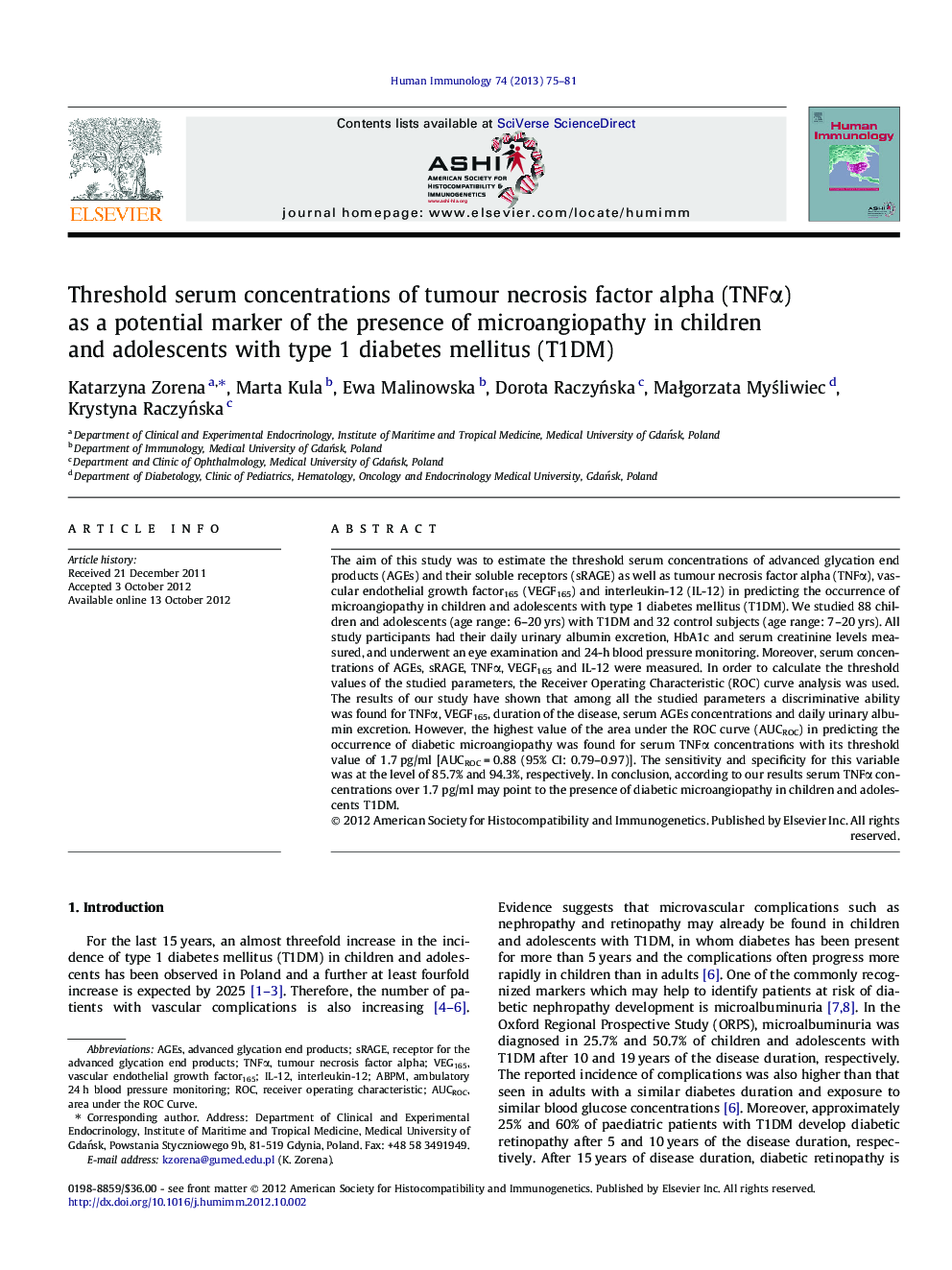| Article ID | Journal | Published Year | Pages | File Type |
|---|---|---|---|---|
| 3350804 | Human Immunology | 2013 | 7 Pages |
The aim of this study was to estimate the threshold serum concentrations of advanced glycation end products (AGEs) and their soluble receptors (sRAGE) as well as tumour necrosis factor alpha (TNFα), vascular endothelial growth factor165 (VEGF165) and interleukin-12 (IL-12) in predicting the occurrence of microangiopathy in children and adolescents with type 1 diabetes mellitus (T1DM). We studied 88 children and adolescents (age range: 6–20 yrs) with T1DM and 32 control subjects (age range: 7–20 yrs). All study participants had their daily urinary albumin excretion, HbA1c and serum creatinine levels measured, and underwent an eye examination and 24-h blood pressure monitoring. Moreover, serum concentrations of AGEs, sRAGE, TNFα, VEGF165 and IL-12 were measured. In order to calculate the threshold values of the studied parameters, the Receiver Operating Characteristic (ROC) curve analysis was used. The results of our study have shown that among all the studied parameters a discriminative ability was found for TNFα, VEGF165, duration of the disease, serum AGEs concentrations and daily urinary albumin excretion. However, the highest value of the area under the ROC curve (AUCROC) in predicting the occurrence of diabetic microangiopathy was found for serum TNFα concentrations with its threshold value of 1.7 pg/ml [AUCROC = 0.88 (95% CI: 0.79–0.97)]. The sensitivity and specificity for this variable was at the level of 85.7% and 94.3%, respectively. In conclusion, according to our results serum TNFα concentrations over 1.7 pg/ml may point to the presence of diabetic microangiopathy in children and adolescents T1DM.
